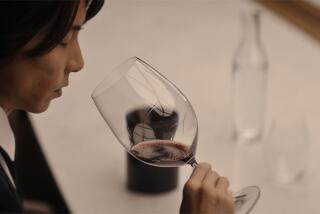The Great Soil Debate
THE LOCATION OF A VINEYARD is of basic importance in wine making. Different soils give different tastes to the wines, which echo the regions of their birth, the places where the grapes were grown. Climate is also important, but wine makers don’t agree on whether it is the soil in which the grapes are grown or the regional climate of the area that accounts for a wine’s excellence or distinctive characteristics.
The ubiquitous explanation for the excellence of any French wine is its gout de terroir , an idiomatic expression that defies translation. Literally, it means taste of the earth . Jean-Paul Gardere, manager of First Growth Chateau Latour, asked to explain the excellence of his Cabernet, responds: “It is the soil, the soil, and, finally, the soil.”
In 1983, Monterey wine maker Bill Jekel took issue with the French soil theory in a Decanter magazine article. Jekel said that “soil components, themselves, do not, as often inferred by the French phrase gout de terroir , contribute identifiable flavors to the wine.” Bruno Prats, owner of the celebrated St. Estephe claret Cos D’Estournel in Bordeaux, who was touring the United States at the time, responded by giving an elaborate definition of the phrase. Gout de terroir , he said, encompasses sun, slope climate and exposure to the elements . Jekel apparently was not aware of this broad definition. At one time, the semantic quarrel blew into a full-scale public debate before the Hollywood Wine Society. The argument is still not resolved, but Jekel is conducting an experiment to determine who is correct.
Last December, on a visit to Jekel Vineyards, I toured the winery with wine maker Steve Passagno. As I was leaving the fermentation hall, my attention was caught by an unusual rack holding nine 5-gallon glass jugs, technically known as carboys, topped with gas-locks to allow carbon dioxide to escape but not allowing air to enter. “What’s this?” I asked. Passagno explained that it was an experiment that went back to the 1983 Jekel-Prats debate. Each of the jugs was filled with a 1989 Monterey County Chardonnay, fermented in stainless steel. But to each jug was added pulverized soil, 5 grams per liter, from one of 10 locations--the Rutherford Bench and nine vineyards: Martha’s Vineyard, Stag’s Leap Vineyard, Oakville, Far Niente, Yolo County, Sierra Foothills, Santa Clara Valley, Jekel’s Monterey Gravelstone Vineyard and Jekel’s Monterey Sanctuary Vineyard. The last-named jug had broken, so only nine remained. I was not permitted to taste the contents, but Passagno told me that each had “a very different and unique taste.”
At lunch, Jekel told me that he now understands the full French meaning of gout de terroir . But lingering doubts about the soil and its role in defining a wine prompted him to conduct the test. It so happens that when fermentation tanks are drained, in the sludge at the bottom is always a measure of silt, microscopically fine earth from the vineyard. The presence of soil that late in the wine-making process implies that soil could well be an important factor. Jekel’s experiment so far does nothing to disprove that likelihood.


